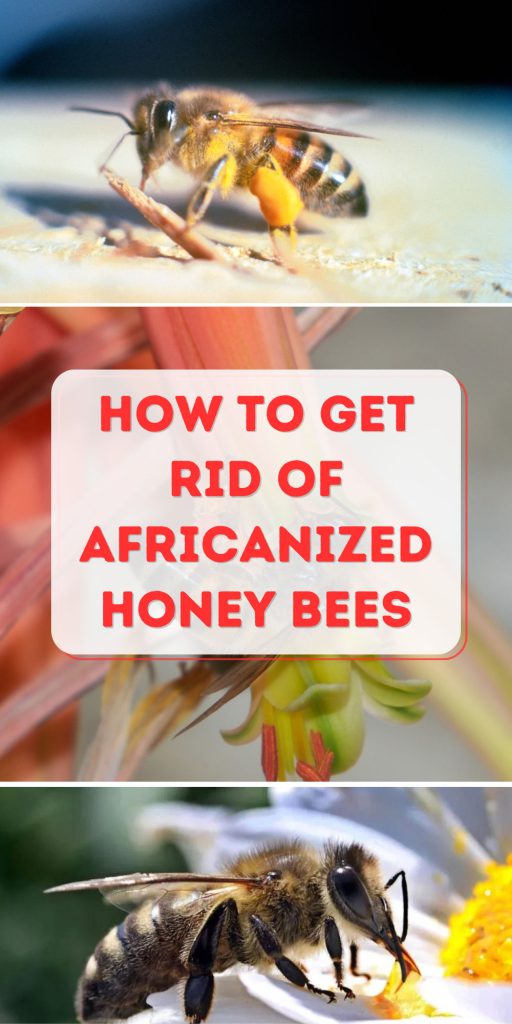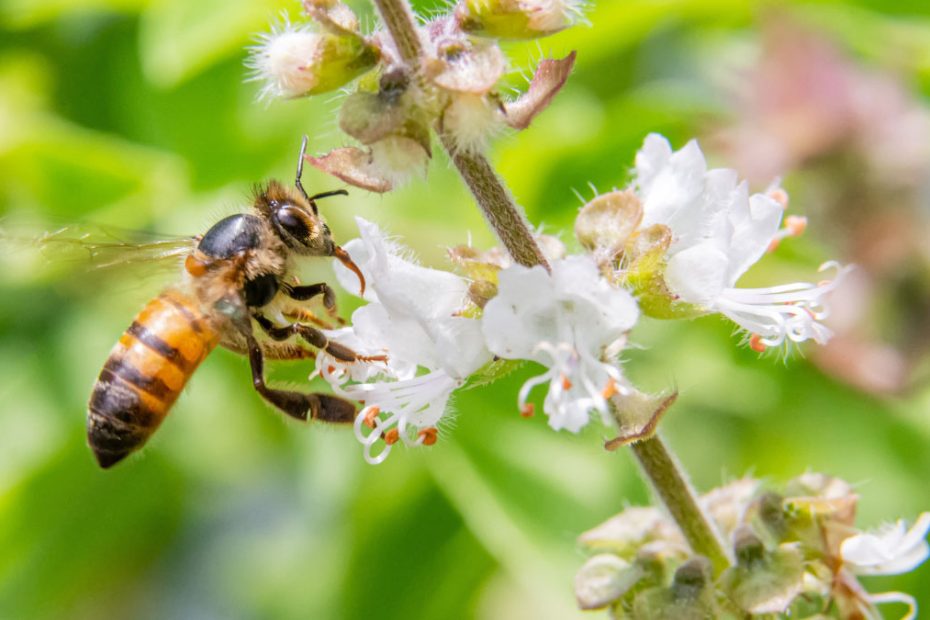If you’ve noticed an unusual number of aggressive bees around your home, you might be dealing with Africanized honey bees. Known for their defensive behavior, these bees can pose a significant threat to you and your loved ones. Understanding how to safely and effectively remove them is crucial.
In this guide, you’ll discover practical steps to identify and eliminate Africanized honey bees from your property. Whether you’re a homeowner or a concerned neighbor, taking the right actions can ensure your safety and restore peace to your surroundings. Let’s jump into the essential tips and strategies to handle this buzzing problem.
Key Takeaways
- Identify Africanized Honey Bees: Recognize their unique traits such as increased aggressiveness, frequent swarming, and loud buzzing to determine their presence.
- Implement Preventive Measures: Secure your home by sealing entry points, installing screens, and performing regular maintenance to minimize nesting sites and attractants.
- Recognize Infestation Signs: Understand the behavioral patterns and physical signs indicating an infestation to take timely action, including calling professionals if needed.
- Adopt Safe Removal Methods: Use protective gear and consider professional pest control services for effective and safe removal of Africanized honey bees, especially in difficult or large-scale scenarios.
- Post-Removal Care: Ensure thorough sealing of entry points, conduct regular property maintenance, and address any structural damage or contamination to prevent future infestations.

Understanding Africanized Honey Bees
Grasping the nature of Africanized honey bees helps in effectively addressing their presence. This section provides essential insights into these bees, starting with their definition and why they pose a concern.
What Are Africanized Honey Bees?
Africanized honey bees, often called “killer bees”, are a hybrid of the African honey bee (Apis mellifera scutellata) and various European honey bees (Apis mellifera). Originating in Brazil in the 1950s, they migrated north, reaching the southern United States by the 1990s. They exhibit increased defensive behaviors compared to their European counterparts.
Key Traits:
- Aggressiveness: Africanized honey bees react quickly to disturbances and may chase perceived threats for over 0.25 miles (400 meters).
- Prolific Swarming: These bees swarm more frequently, leading to rapid colony expansion.
- Adaptability: They thrive in a variety of environments, from forests to urban areas.
Why They Are a Concern
Africanized honey bees pose several risks due to their aggressive nature. Understanding the specific threats they represent allows for better management and safety practices.
Safety Risks:
- Stings: Their venom is not more potent, but they sting in large numbers, increasing the risk of allergic reactions and even fatalities.
- Psyche Impact: The potential for attacks can cause stress in affected communities.
- Animal Threats: They also target pets and livestock, leading to injuries and potential fatalities.
- Native Species Displacement: They compete with native pollinators for resources, potentially disrupting local ecosystems.
- Human-Wildlife Conflicts: Increased presence in urban areas can lead to more interactions with humans, raising the risk of stinging incidents.
Summary
Effective management of Africanized honey bees involves recognizing their unique behaviors and potential risks. Equipped with this understanding, you can approach their removal with the necessary precautions and strategies.
Preventive Measures
Preventing a potential infestation of Africanized honey bees is crucial for maintaining a safe environment. By securing your home and reducing elements that attract these bees, you can minimize risks.
Securing Your Home and Property
Taking proactive steps to make your home less inviting to bees reduces the likelihood of an infestation.
- Seal Entry Points: Inspect your home for gaps or cracks. Use caulk to seal openings around windows, doors, and utility lines.
- Install Screens: Use fine mesh screens on doors and windows. Cover vents and chimneys to prevent bees from entering.
- Regular Maintenance: Check for signs of bee activity around your property. Inspect eaves, attics, and sheds regularly.
- Remove Potential Nesting Sites: Clear yard debris and trim overgrown bushes. Bees commonly nest in piles of wood or dense foliage.
Reducing Attractants
Minimizing factors that draw bees to your property lowers the chances of attracting a swarm.
- Secure Trash Cans: Use lids on all trash cans. Dispose of food waste properly to avoid attracting bees.
- Limit Water Sources: Fix leaky faucets and remove standing water. Use enclosed water features where possible.
- Plant Selection: Opt for plants that are less attractive to bees. Avoid flowering plants around high-traffic areas.
- Properly Store Food: Keep outdoor food and drinks covered, especially during picnics or gatherings.
By implementing these preventive measures, you can protect your home and ensure a safer environment for you and your neighbors.
Identifying an Infestation
Recognizing an infestation of Africanized honey bees is crucial for your safety. Effective identification can prevent dangerous encounters and guide appropriate actions.
Signs of Africanized Honey Bees
Detecting Africanized honey bees involves observing specific behaviors and physical characteristics. Use these key indicators:
- Aggressiveness: Unlike European honey bees, Africanized honey bees react more aggressively to disturbances. Their defensive behavior includes swarming in large numbers and pursuing threats over long distances.
- Prolific Swarming: Africanized bees swarm more frequently in comparison to other bees. Spotting multiple swarms in a single area may indicate their presence.
- Noise Levels: If you hear unusually loud buzzing around your property, it may be a sign of a nearby hive, indicating an infestation.
When to Call a Professional
Handling Africanized honey bees without proper expertise can be hazardous. Engage professionals under these conditions.
- Large Swarms: If the bees form large swarms or clusters, professional intervention is necessary to avoid aggressive attacks.
- Difficult Access: When hives are located in hard-to-reach areas, such as walls or attics, experts with specialized equipment can safely remove them.
- Repeated Sightings: Frequent sightings of aggressive bees suggest a nearby hive. Professionals can locate and eliminate the source effectively.
Recognizing the signs and knowing when to call an expert ensures your safety and proper management of Africanized honey bee infestations.
Safe Removal Methods
Africanized honey bees, while important pollinators, pose significant risks to humans and animals due to their aggressive nature. Safe removal is crucial to avoid unnecessary harm or injury.
DIY Approaches
When dealing with small infestations, you can cautiously attempt DIY methods if safety measures are strictly adhered to.
- Protective Gear: Always wear a beekeeper suit, gloves, and a veil. Ensure all skin is covered to prevent stings.
- Approach Timing: Perform removal work early in the morning or late evening when bees are less active.
- Smoke Method: Use a bee smoker to calm bees. Aim smoke at the hive’s entrance.
- Bee Vacuum: Employ a specially designed bee vacuum to capture bees without killing them.
- Relocation: Seal the hive entry and carefully transport the hive to a safe, isolated location far from human activity.
Professional Pest Control Services
Hiring professionals ensures the safe and effective removal of Africanized honey bees, especially with large colonies or hard-to-reach locations.
- Assessment: Experts assess the hive’s size and location to tailor the removal strategy.
- Specialized Equipment: Professional services use advanced equipment designed for safe bee removal.
- Proper Disposal: Technicians ensure the removed bees and hive are disposed of or relocated according to local regulations.
- Preventive Measures: Providers often offer follow-up services to prevent future infestations by sealing entry points and recommending maintenance practices.
- Emergency Response: Many professional services offer 24/7 emergency response for urgent situations.
By understanding and implementing these safe removal methods, you can effectively manage and mitigate the risks posed by Africanized honey bees to ensure your safety and the safety of those around you.
Post-Removal Steps
After removing Africanized honey bees, ensuring your property stays bee-free and addressing any damage caused by the bees is crucial. This section outlines the necessary steps to secure your home and repair any harm done.
Preventing Future Infestations
To prevent future infestations of Africanized honey bees, thorough measures must be taken.
Seal Entry Points:
- Inspect your home for any openings.
- Use caulk or other sealants to close gaps in walls, eaves, and roofs.
- Ensure doors and windows fit snugly and add weather stripping if necessary.
Install Screens:
- Place screens on all vents.
- Check screens on windows and doors for tears or loose fittings and repair them promptly.
Regular Maintenance:
- Conduct routine inspections of your property.
- Remove debris, fallen branches, and potential nesting sites like hollow trees or unused equipment.
Reduce Attractants:
- Secure trash cans with tight lids.
- Limit water sources by fixing leaks and removing standing water.
- Choose less attractive plants and properly store food to avoid drawing bees.
Addressing Bee Damage
Bee infestations can cause structural damage and contamination. Addressing these issues is vital for restoring your home’s integrity.
Structural Repair:
- Inspect for damage to walls, roofs, and eaves.
- Replace or repair compromised structures, such as wooden beams weakened by hive activity.
Contamination Cleanup:
- Remove any remaining honeycomb and hive material to prevent attracting other pests.
- Clean surfaces thoroughly with soap and water.
Preventive Treatments:
- Consider applying insecticides to previously infested areas to deter future bees.
- Use natural repellents like essential oils in strategic locations.
Following these steps ensures a safer, bee-free environment, keeping your home secure and preventing further damage. Engaging professional services for inspections and repairs could also add an extra layer of protection and peace of mind.
Conclusion
Effectively managing Africanized honey bees requires a multi-faceted approach. By understanding their unique behaviors and risks, you can take proactive steps to secure your property and ensure your family’s safety. Carry out preventive strategies like sealing entry points and reducing attractants to minimize the chances of an infestation.
When faced with an infestation, recognize the importance of safe removal methods. For small issues, DIY approaches can work if you’re cautious. But, don’t hesitate to call professionals for larger or more complex situations. Post-removal actions are equally crucial; make sure to repair any damage and maintain preventive measures to keep your home safe.
By staying informed and prepared, you can protect your home and community from the threats posed by Africanized honey bees.
Frequently Asked Questions
What are Africanized honey bees?
Africanized honey bees are a hybrid of African and European honey bees. They originated in Brazil and have migrated to the southern United States. Known for their aggressiveness, prolific swarming, and adaptability to various environments, these bees pose significant risks to people and animals.
How can I identify Africanized honey bees?
You can identify Africanized honey bees by their aggressive behavior, prolific swarming, and the loud buzzing they produce. They tend to be more defensive than other bees, making multiple stings likely if they feel threatened.
What risks do Africanized honey bees pose?
Africanized honey bees pose several risks, including potential for multiple stings, psychological stress, threats to pets and livestock, competition with native pollinators, and increased human-wildlife conflicts in urban areas.
How can I prevent an infestation of Africanized honey bees?
To prevent infestations, seal entry points in your home, install screens, conduct regular maintenance, remove potential nesting sites, secure trash cans, limit water sources, choose less attractive plants, and properly store food.
When should I call a professional for Africanized honey bee removal?
Call a professional when you encounter large swarms, hives in difficult-to-reach areas, or repeated sightings of aggressive bees. Professional pest control services can safely assess, remove, and prevent further infestations.
What are some DIY methods for removing small infestations?
For small infestations, you can attempt DIY removal with safety measures: wear protective gear, remove bees during less active hours, use smoke to calm them, employ a bee vacuum, and relocate the hive. Always use strict safety protocols.
What post-removal steps should I take after removing Africanized honey bees?
After removal, seal entry points, install screens, perform regular maintenance, reduce attractants, conduct structural repairs, and clean up contamination. Consider preventive treatments like insecticides and natural repellents to deter future bees.
